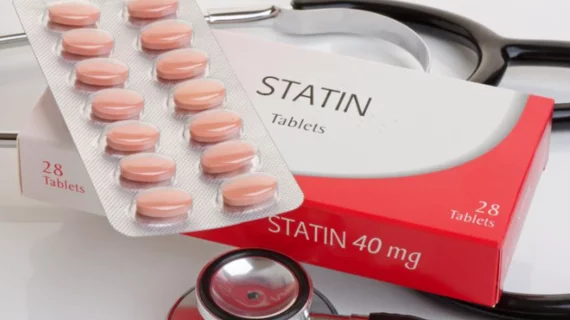A Chinese study of over 5,000 high-risk adults, published in JAMA Network Open, showed significantly lower baseline arterial stiffness values for statin users, as well as slower progression of arterial stiffness over time.[1]
On average, statin users had a baseline brachial-ankle pulse wave velocity (baPWV) that was 33.6 centimeters per second lower than non-users. In addition, statin users' baPWV levels progressed by 23.3 fewer centimeters per second per year than non-users.
To make these determinations, first author Yan-Feng Zhou, PhD, of Huazhong University of Science and Technology in Wuhan and coauthors performed a retrospective cohort study of Kailuan General Hospital patients presenting with high atherosclerotic risk.
“Statin use information was retrieved from electronic medical records from 2010 to 2020, and statin users were those who have been prescribed any statin medications at least six months before baPWV measurements. Statin users were 1:1 matched with non–statin users by propensity score method,” Zhou and coauthors wrote in the study.
The measure they used to compare arterial stiffness, baPWV, is significantly associated with both cardiovascular disease and all-cause mortality, the study notes. Any significant reduction in the measure would therefore be promising in terms of improving future outcomes.
“Our findings suggest that statin use might provide a substantial potential in decelerating progression of arterial stiffness and preventing the development of subclinical cardiovascular lesions at an early stage," the group wrote.
The topic of statin use for arterial stiffness is an issue that has previously been studied with mixed results, the authors noted. While some of those prior studies reported positive results and others reported null results, they were often limited due small sample sizes or a lack of long-term follow-up data. The current study, meanwhile, was designed to include a larger sample size and an average follow-up time of nearly five years. In addition, the authors noted, this is the first study to focus on progression rates.
Although these conclusions help offer clarity and promise, the authors called for prospective studies to validate the associations they found.
Related Content:
Predicting the impact of new heart attack medications
NOACs comparable to warfarin when treating AFib patients with valvular heart disease
FDA committee backs Novavax's COVID-19 vaccine despite heart damage concerns
Reference:
1. Zhou, Y.; Wang, Y.; Wang, G.; et al. Association Between Statin Use and Progression of Arterial Stiffness Among Adults With High Atherosclerotic Risk. JAMA Network Open. June 17, 2022. DOI:10.1001/jamanetworkopen.2022.18323
